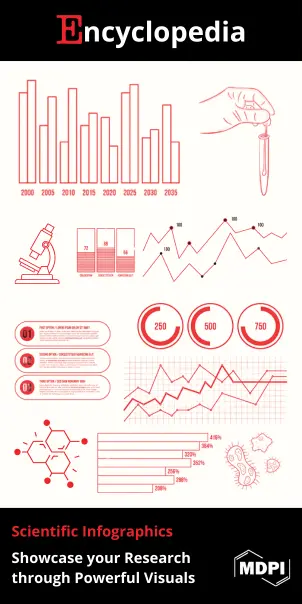
| Version | Summary | Created by | Modification | Content Size | Created at | Operation |
|---|---|---|---|---|---|---|
| 1 | Flora Kuehne | + 246 word(s) | 246 | 2020-12-15 09:23:30 | | | |
| 2 | Nora Tang | + 224 word(s) | 470 | 2021-02-24 06:53:17 | | |
Video Upload Options
Insufficient vaccination rates against pneumococcal disease are a major problem in primary health care, especially in adult patients. Shared decision-making (SDM) may address major barriers to vaccination.
1. Introduction
Pneumococcal infections account for a considerable burden of disease and associated economic burden worldwide [1] For example, in the US pneumococcal infections are estimated to contribute to 25,400 deaths annually and account for $3.8 billion of direct treatment costs per year [2].
2. History
Although pneumococcal infections can affect people of all ages, adults aged 65 years and above, as well as children below the age of two are at increased risk. Additionally, patients with chronic conditions have a higher risk for severe infections that can come with increased complications, long-term health constraints, and mortality [3][4].
Pneumococcal infections can be effectively prevented through vaccination [3][5][6]. Internationally available vaccines today comprise polysaccharide (PPV) and conjugate vaccines (PCV) protecting against different serotypes of Streptococcus pneumoniae [3][7]. Despite the possibility to treat pneumococcal disease with antibiotics, prevention by vaccination can additionally establish herd immunity by lowering pneumococcal carriage rates in the population and can counteract antibiotic resistance [3]. The vaccination against Streptococcus pneumoniae is recommended for elderly patients and patients with chronic conditions in most health care systems, with different application schemes for these respective patient groups [8][9][10][11].
Despite safety, accessibility and affordability of vaccines, pneumococcal vaccination rates remain below national targets in several high-income countries (e.g., in Germany 12.7% of the chronically ill and 50.9% of the elderly [12][13][14]). Pneumococcal vaccination rates tend to be especially low in high-risk patients (<65 years with a chronic health condition) ranging between about 13% in Germany and 30% in the US [12][13][14].
3. Development
Insufficient vaccination rates are often a result of missed opportunities for vaccination (MOV), that might be attributable to health care provider (HCP) related factors, demand-related factors, and factors due to health system constraints [15][16]. Reported barriers to pneumococcal vaccination include missing recommendations and insufficient knowledge of HCP [17][18], as well as patients’ lack of awareness, assumptions of unnecessity, and doubts about the pneumococcal vaccine and its efficacy and safety [19][20].
In the consultation, the recommendation to get vaccinated, and the communication of risks and benefits can be constrained by HCP’s knowledge and confidence, communication style or lack of time [21][22][23]. HCP are recognized the most trusted source of health information for patients [20]. By taking into consideration that most patients are vaccinated in outpatient care [24], HCP in this setting are in a crucial position to inform and educate patients about vaccinations and to address patients’ doubts and concerns.
A frequently recommended approach of patient communication is described as shared decision making (SDM), which describes the involvement of the patient in the whole process of decision making, in which HCP and the patient take health care decisions based on partnership. The SDM approach emphasizes patients’ rights and autonomy and is considered as a strategy to reduce practice variations and promote evidence based medicine [25].
References
- Blasi, F.; Mantero, M.; Santus, P.; Tarsia, P. Understanding the burden of pneumococcal disease in adults. Clin. Microbiol. Infect. 2012, 18, 7–14.
- Weycker, D.; Strutton, D.; Edelsberg, J.; Sato, R.; Jackson, L.A. Clinical and economic burden of pneumococcal disease in older US adults. Vaccine 2010, 28, 4955–4960.
- European Center for Disease Prevention and Control. Disease Factsheet about Pneumococcal Disease. Available online: https://www.ecdc.europa.eu/en/pneumococcal-disease/facts (accessed on 25 May 2020).
- Berical, A.C.; Harris, D.; Dela Cruz, C.S.; Possick, J.D. Pneumococcal Vaccination Strategies. An Update and Perspective. Ann. Am. Thorac. Soc. 2016, 13, 933–944.
- Center for Disease Control and Prevention (CDC). Pneumococcal Vaccination: What Everyone Should Know. Available online: https://www.cdc.gov/vaccines/vpd/pneumo/public/index.html (accessed on 25 August 2020).
- National Health Service (NHS). Pneumococcal Vaccine Overview. Available online: https://www.nhs.uk/conditions/vaccinations/pneumococcal-vaccination/ (accessed on 25 August 2020).
- World Health Organization (WHO). Pneumococcal Conjugate Vaccines. Available online: https://www.who.int/biologicals/areas/vaccines/pneumo/en/ (accessed on 25 August 2020).
- Australian Government Department of Health. National Immunisation Program Schedule. 2019. Available online: https://www.health.gov.au/resources/publications/national-immunisation-program-schedule-landscape (accessed on 25 August 2020).
- NHS. NHS Vaccinations and when to Have Them. Available online: https://www.nhs.uk/conditions/vaccinations/nhs-vaccinations-and-when-to-have-them/ (accessed on 28 May 2020).
- Robert Koch-Institut. Impfkalender (Standardimpfungen) für Säuglinge, Kinder, Jugendliche und Erwachsene. Epidemiologisches Bulletin; Robert Koch-Institut: Berlin, Germany, 2019; p. 34.
- CDC. Recommended Adult Immunization Schedule. 2020. Available online: https://www.cdc.gov/vaccines/schedules/hcp/imz/adult-conditions.html (accessed on 28 May 2020).
- Dyda, A.; Karki, S.; Hayen, A.; MacIntyre, C.R.; Menzies, R.; Banks, E.; Kaldor, J.M.; Liu, B. Influenza and pneumococcal vaccination in Australian adults: A systematic review of coverage and factors associated with uptake. BMC Infect. Dis. 2016, 16.
- Theidel, U.; Kuhlmann, A.; Braem, A. Pneumocccal vaccination rates in adults in Germany—An analysis of statutory health insurance data on more than 850 000 individuals. Dtsch. Arztebl. Int. 2013, 110, 743–750.
- CDC. Adult VaxView. 2008 through 2018 Adult Vaccination Coverage Trend Report. Available online: https://www.cdc.gov/vaccines/imz-managers/coverage/adultvaxview/data-reports/general-population/trend/index.html (accessed on 28 August 2020).
- WHO. MOV Intervention Guidebook for Implementing and Monitoring Activities to Reduce Missed Opportunities for Vaccination; World Health Organization: Geneva, Switzerland, 2019.
- Anderson, E.L. Recommended solutions to the barriers to immunization in children and adults. Mol. Med. 2014, 111, 344–348.
- Lode, H.; Ludwig, E.; Kassianos, G. Pneumococcal Infection—Low Awareness as a Potential Barrier to Vaccination: Results of a European Survey. Adv. Ther. 2013, 30, 387–405.
- Rehm, S.J.; File, T.M.; Metersky, M.; Nichol, K.L.; Schaffner, W. Identifying Barriers to Adult Pneumococcal Vaccination: An NFID Task Force Meeting. Postgrad. Med. J. 2012, 124, 71–79.
- Johnson, D.R.; Nichol, K.L.; Lipczynski, K. Barriers to adult immunization. Am. J. Med. 2008, 121, 28–35.
- Dube, E.; Laberge, C.; Guay, M.; Bramadat, P.; Roy, R.; Bettinger, J. Vaccine hesitancy: An overview. Hum. Vaccines Immunother. 2013, 9, 1763–1773.
- Holt, D.; Bouder, F.; Elemuwa, C.; Gaedicke, G.; Khamesipour, A.; Kisler, B.; Kochhar, S.; Kutalek, R.; Maurer, W.; Obermeirer, P.; et al. The importance of the patient voice in vaccination and vaccine safety—Are we listening? Clin. Microbiol. Infect. 2016, 22, 146–153.
- Hobson-West, P. ‘Trusting blindly can be the biggest risk of all’: Organised resistance to childhood vaccination in the UK. Sociol. Health Illn. 2007, 29, 198–215.
- MacDonald, N.E.; Butler, R.; Dubé, E. Addressing barriers to vaccine acceptance: An overview. Hum. Vaccines Immunother. 2018, 14, 218–224.
- European Observatory on Health Systems. The Organization and Delivery of Vaccination Services in the European Union; Rechel, B., Richardson, E., Eds.; WHO: London, UK, 2018.
- Stiggelbout, A.M.; Pieterse, A.H.; de Haes, J.C. Shared decision making: Concepts, evidence, and practice. Patient Educ. Couns. 2015, 98, 1172–1179.




